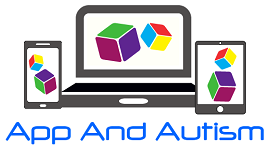Tre bambini con Disturbo dello Spettro Autistico imparano a eseguire una sequenza di comunicazione in tre fasi utilizzando un comunicatore su iPad
Three children with autism spectrum disorder learn to perform a three-step communication sequence using an iPad®-based speech-generating device
Waddington H, Sigafoos J, Lancioni GE, O'Reilly MF, van der Meer L, Carnett A, Stevens M, Roche L, Hodis F, Green VA, Sutherland D, Lang R, Marschik PB.
Int J Dev Neurosci. 2014 Dec;39:59-67. doi: 10.1016/j.ijdevneu.2014.05.001. Epub 2014 May 10.
Abstract
BACKGROUND: Many children with autism spectrum disorder (ASD) have limited or absent speech and might therefore benefit from learning to use a speech-generating device (SGD). The purpose of this study was to evaluate a procedure aimed at teaching three children with ASD to use an iPad(®)-based SGD to make a general request for access to toys, then make a specific request for one of two toys, and then communicate a thank-you response after receiving the requested toy.
METHOD: A multiple-baseline across participants design was used to determine whether systematic instruction involving least-to-most-prompting, time delay, error correction, and reinforcement was effective in teaching the three children to engage in this requesting and social communication sequence. Generalization and follow-up probes were conducted for two of the three participants.
RESULTS: With intervention, all three children showed improvement in performing the communication sequence. This improvement was maintained with an unfamiliar communication partner and during the follow-up sessions.
CONCLUSION: With systematic instruction, children with ASD and severe communication impairment can learn to use an iPad-based SGD to complete multi-step communication sequences that involve requesting and social communication functions.
BACKGROUND: Many children with autism spectrum disorder (ASD) have limited or absent speech and might therefore benefit from learning to use a speech-generating device (SGD). The purpose of this study was to evaluate a procedure aimed at teaching three children with ASD to use an iPad(®)-based SGD to make a general request for access to toys, then make a specific request for one of two toys, and then communicate a thank-you response after receiving the requested toy.
METHOD: A multiple-baseline across participants design was used to determine whether systematic instruction involving least-to-most-prompting, time delay, error correction, and reinforcement was effective in teaching the three children to engage in this requesting and social communication sequence. Generalization and follow-up probes were conducted for two of the three participants.
RESULTS: With intervention, all three children showed improvement in performing the communication sequence. This improvement was maintained with an unfamiliar communication partner and during the follow-up sessions.
CONCLUSION: With systematic instruction, children with ASD and severe communication impairment can learn to use an iPad-based SGD to complete multi-step communication sequences that involve requesting and social communication functions.

